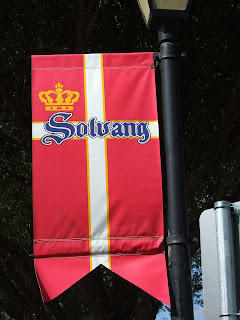
On the night of our arrival, we ate at Tan Cang Vietnamese Seafood Restaurant. Among the dishes we tried were abalone with bamboo, snow peas, and shitake mushrooms; catfish hot-and-sour soup; and my personal favorite, crab sauteed in tamarind sauce.

The next day, we met Tung's sister at the UCLA campus to pick her up after her campus tour.


We stopped at the the sleek and modern campus Jamba Juice to reminisce upon the days when Tung and I would wait for our campus-job paychecks from SJSU to afford to treat ourselves to one Jamba Juice, power-sized and split into two cups. He would never let me have the Femme Boost.


After UCLA, we browsed Rodeo Drive, home of the unaffordable-and-preposterously-overpriced tourist window shopping.


Big-brand-name shops and fancy cars are a commonplace around Rodeo Drive, and Tung had fun car-watching. He even scored big with this picture next to a Bugatti. Insurance for this bad boy must cost...how much? A mere million dollars or so?

Even the Beverly Hills chihuahuas come here all dolled up and decked out.

Million-dollar, precious-gemstone-studded clubbing clutch purse, anyone?

Inspired by an "ancient" statue, Tung thought he'd fit in a yoga session.

I'll just kick it with the bouganvillea here and wait for him to finish.

May 7th, the night of the birthday dinner. The red cloth is laid out to serve as a "guest book."

Here's our "birthday boy"! It's been explained to me that the Chinese believe odd numbers are lucky, so they will celebrate landmark birthdays such as 71st, 81st, and 91st, never on an even-aged year.

The immediate family gather on stage to sing happy birthday to him. How odd it must be to hear this song sung to you for the 91st time throughout your life!

Tung's parents take a picture with one of his dad's relatives. He has not seen most of these people for a long time.

Here we are, enjoying the dinner.

On the road trip home the next day, we dropped by Sanuki No Sato Japanese Cuisine for lunch. The place is renowned for having a lot of famous people, including Hollywood stars, visit to eat.

Tung had a "tofu custard" as one of his appetizers.

And I enjoyed a steaming bowl of udon. The fresh noodles were delicious and definitely distinguished in taste and texture than the refrigerated or dehydrated udon noodles.
Our last touristy stop before heading home for the work week was Solvang, CA.

There were horse-drawn-carriage tours around the small town.

We dropped by Carivintas Winery so Tung's dad can experience his first wine tasting. I'll admit I was a little jealous to have to sit out due to being on medication.

Carivintas Winery has doggie decor all over its walls, from quirky pet photos to blown-up modern art of dogs. They donate a portion of sales to shelters to help homeless dogs.













